From June 4 to 7, the beekeeping season officially began at Agrocité, with initiation workshops into the arts and lives of bees! Workshops were run by Alain, a local beekeeper who has developed a small apiary, allowing interested inhabitants to learn and practice with him.
Workers, the queen, drone, swarming, queen cells, nectar, pollen, honey, propolis are all a part of what keeps bees busy and what nourishes our planet… It is in a spirit of respect for the bee and their needs that is crucial to beekeeping, as Alain has instilled in us. We thank him and invite interested parties to make themselves known because the magic of beekeeping has only just begun!
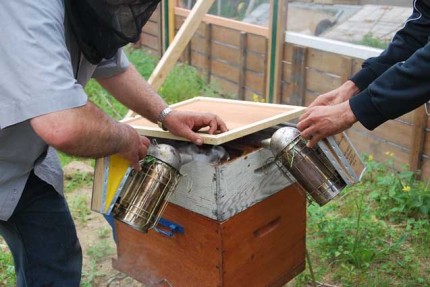
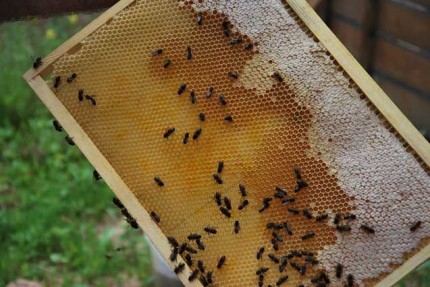
posted 2014-06-16 12:54:02
Agrocité has become new home to a collection of beautiful chickens and busy bees!
Eight chickens have recently inhabited the coop located towards the back of Agrocité. As you can see from the pictures below, these chickens are no ordinary chickens! They come in different shapes and sizes, colours and textures- some feathered and some fluffy, some with hair like mohawks while others with hair on feet!
The three hens pictured below arrived on the 12th of May and have already began laying beautiful eggs (which are for sale at agrocité’s non-consumerist shop selling delicious local produce)!
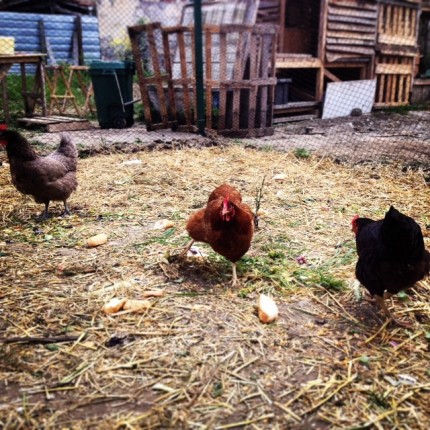
The other five chickens (pictured below) arrived a week later and are younger in age, meaning they havent began laying and are still a bit shy in their new home. These chickens were given to us by a local chicken appreciation society who will soon hold an educational workshop to teach us about our new feathery friends, including how to take care of them, their different personalities (what they like and dont like), the different breeds of chickens as well as answer any questions you might have!
Keep an eye and ear out for the chicken workshop- date is soon to be announced!
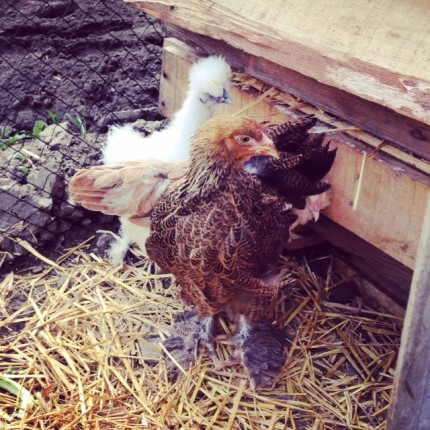
The other, less cuddly but nonetheless important, residents of Agrocité are the bees! Given to us by Alan the local beekeeper, this swarm of bees have been busy settling into their new surroundings, tasting the springtime flowers and making delicious honey! More hives are to arrive in the coming weeks.
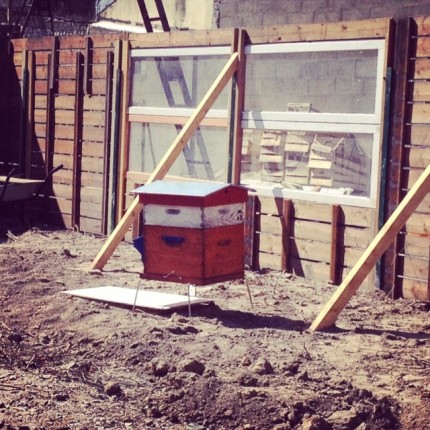
We have built an area so you can come and watch the bees do what they do from a safe enclosure, while you are free to enter the chicken coop and say hi to our new feathered friends!
See you soon!
posted 2014-04-24 09:56:06
Agrocité is coming to life! We are finally using the building for one of its original purposes: as a greenhouse!
Currently growing is a selection of squash, zucchini, tomatoes, cabbage and lettuce! With new seeds sprouting each day, you can really watch life unfurl before your eyes..
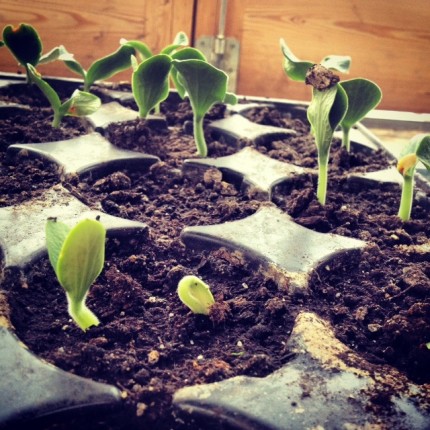
posted 2014-04-23 12:23:55
In Agrocité, our plots are surrounded by hedges and alleys home to many small plants that we do not always know. These can be edible, medicinal and beautiful plants… They also tell us the characteristics of our land … yet most commonly, we refer to them as “weeds!”
Sylvie, host Nature Center, will teach us a little more about the flora that surrounds us!
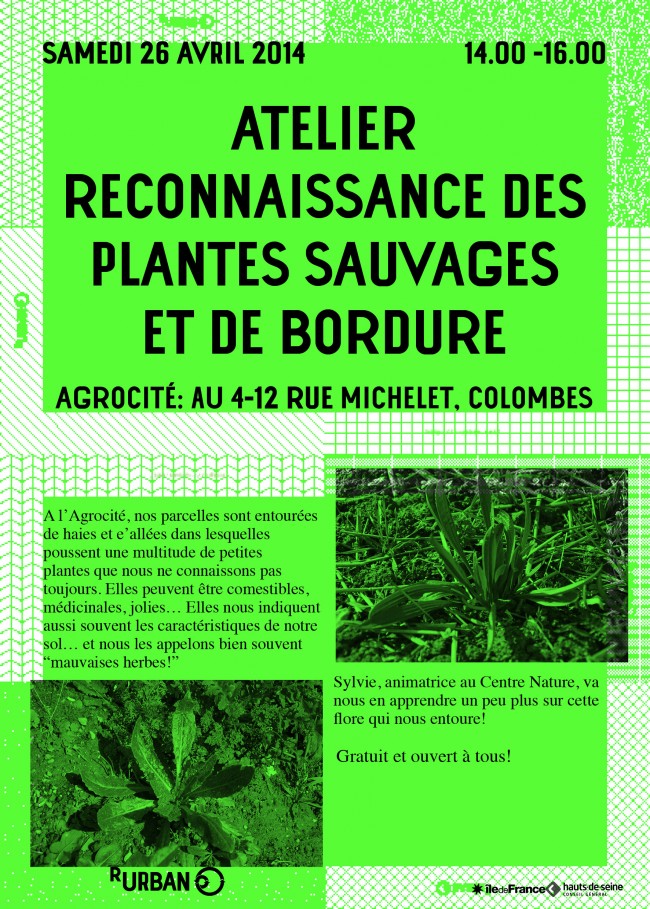
posted 2014-03-19 14:36:23
Celebrate spring by planting a mound of aromatic goodness at Agrocité!
The entrance to the garden has been prepared to accommodate a selection of aromatic and medicinal plants. The mound is a perfect spot for these kinds of plants as they need more heat and drought than other plants, and the slope will allow us to create different environments to suit our companions of a thousand smells!
Come and join us in planting ans sowing thyme, rosemary, lavender, sage, parsley, coriander, sorrel, comfrey …
Entry free and open to all!
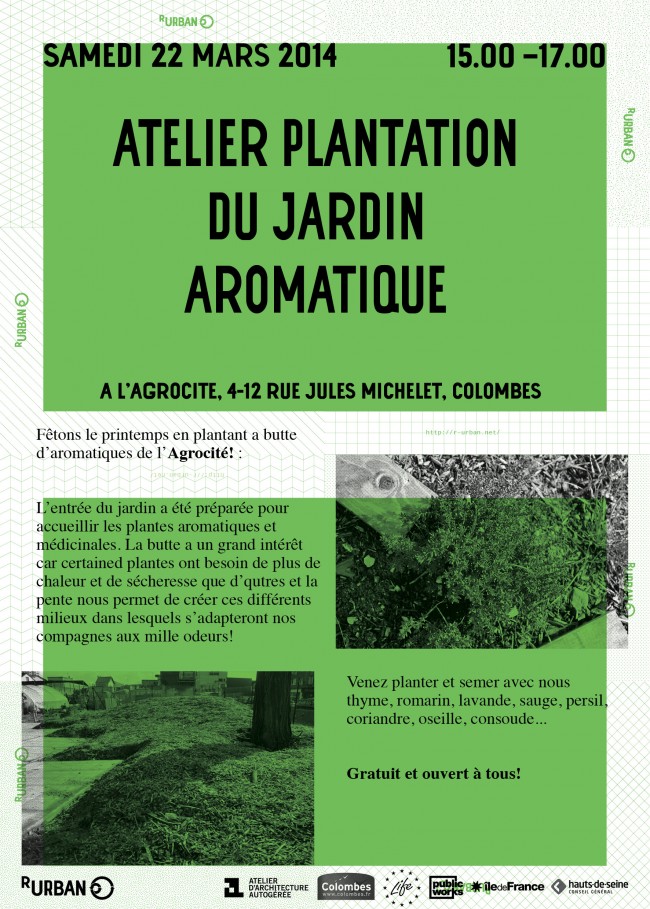
posted 2014-03-19 13:47:15
Quoicollective workshop
Quiinhabitants of Colombes and aaa
OùMichelet garden
QuandMay 26, 2012
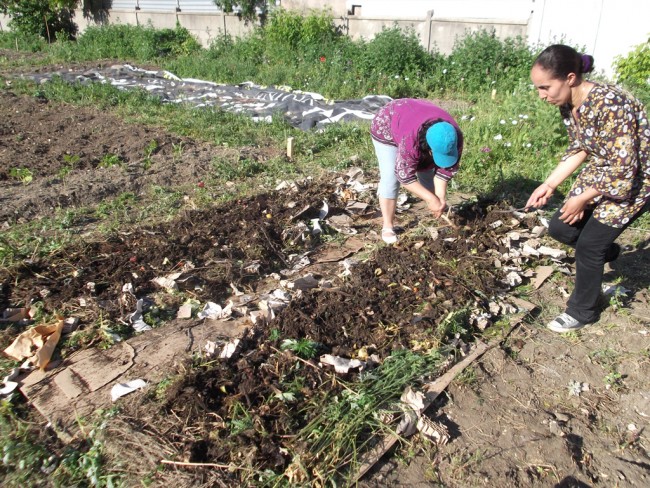
This week, hands-on workshop was devoted to gardening in the “lasagna method”. This technique enriches poor soil through organic gardening, and involves reusing waste such as cardboard, cut branches and leftover vegetables from the market, and use them in layers on the plot to grow: from the least decomposed on the bottom to the more decomposed on the uppermost layer. This allows for a highly nutritious substrate that can reconstruct the humus soil and avoid, by smothering weeds, the bulk of the weeding. We can even install a vegetable garden where there is no land on the concrete.
On this occasion three lasagna were carried out, one in the educational garden, and the other two on the Agrolab. The stack of layers followed this order: thick cardboard, twigs, dried grasses (in our case the result of weeding the garden), green waste market, shredded paper and cardboard, compost, enriched earth and vermicompost.
We have directly planted tomato plants, squash, pumpkins and squash (you can not sow directly in the lasagna, it takes little plants which are already a little developed). We can thus see how the plants react, compared to conventional planting in the garden soil.
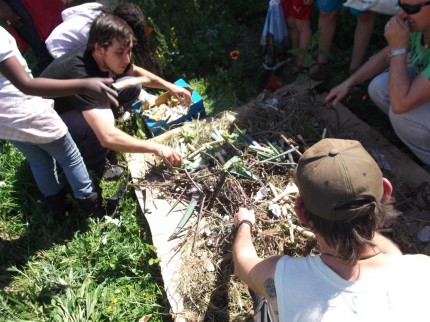
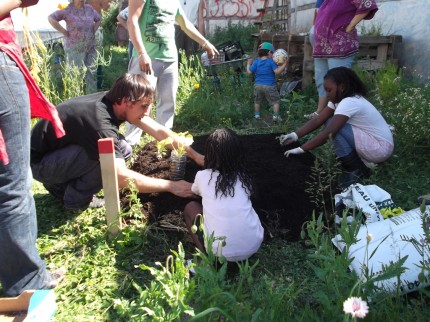
posted 2012-07-21 10:40:55
Quoicollective workshop
Quiinhabitants of Colombes, Yvon of Ecology Nature and aaa
OùMichelet garden
QuandApril 28, 2012
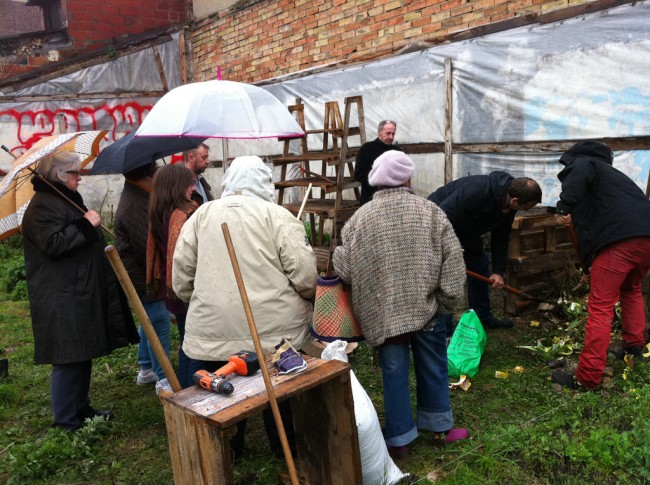
This last Saturday, despite the rain, you came in great numbers to participate in the compost workshop. For the occasion, we received Yvon, master composter from Nature Ecology . He has given us the recipe for good compost: the secret is in the balance between green waste and brown waste. The green waste is of nitrogenous matter (vegetable peelings, grass, cut flowers) while the wastes are brown on the other very rich in carbon (untreated cardboard, small wood, coffee grounds). Thus, we followed this basic rule to form the compost from the Michelet garden: we had green waste from the Marcellin Berthelot market, peelings from a Cameroonian restaurant nearby, and what each had set aside during this week in anticipation of workshop. For balance, we asked the cafe across the street to give us his coffee waste and we had gleaned cartons and branches of vines, which were the brown waste. In the afternoon we also saw a new manufacturing equipment for the garden: a composter in pallets, with three compartments, one of which already completed, so the result of this workshop was very informative.
Remember, the compost is manufactured in the long run, your various peelings are always welcome!
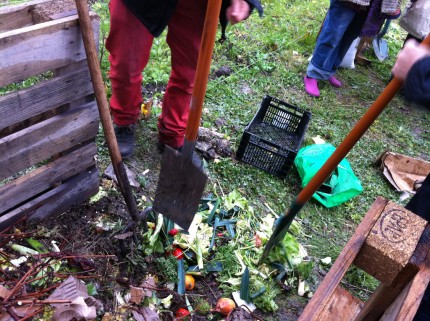
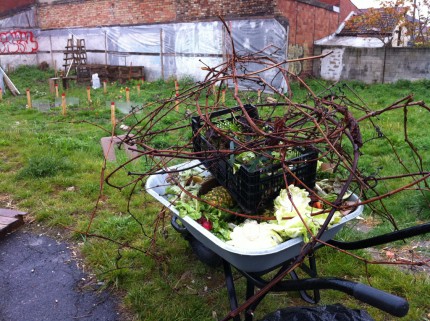
posted 2012-07-21 10:29:42
Quoicollective workshop
Quiinhabitants of Colombes and aaa
OùMichelet garden
QuandApril 14, 2012
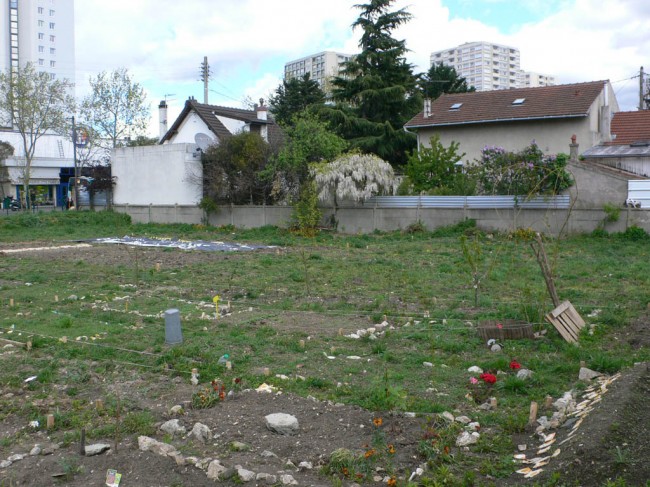
This Saturday, we planted a hedge between the shared garden plots and the large plots of the Agrolab. It is not yet very visible, but, undoubtedly, it will grow!
A hedge is a fence made of live plants (trees, thorny shrubs, lianas). It also goes by the name of diversified hedge, ecological hedge, or country hedgerow when it consists of multiple species. Indeed, a hedge composed of different species is much more beneficial to the environment than hedgerows monospecific (single species), which are more susceptible to disease, climatic variations and are less well stocked than hedges involving various species . On the other hand, they cause an environmental depletion of the low fauna that they host. We know particularly cedar hedges are heavily used as they are very compact. For us, this is “green concrete”!
On Agrocité, the hedge is made of planted hazel, dogwood, plum, St. Lucia cherry, peach, broom, Europe charcoal, willow-wicker, all of which bring many benefits. Obviously, it separates two visually distinct spaces, but it also helps fight against soil erosion, improve water filtration and absorbs excess chemicals. The willow-wicker, because they are renewed very quickly, produce wood for use as fuel, to heat us while we will be eating this summer the first crop of fruit trees. This is both a shelter and a food source for small wildlife, and this, to support biodiversity.
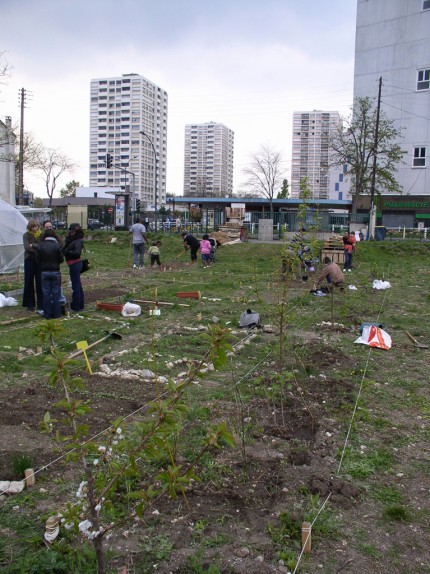
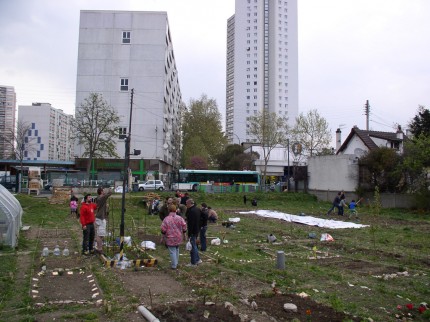
posted 2012-07-21 10:23:20



















